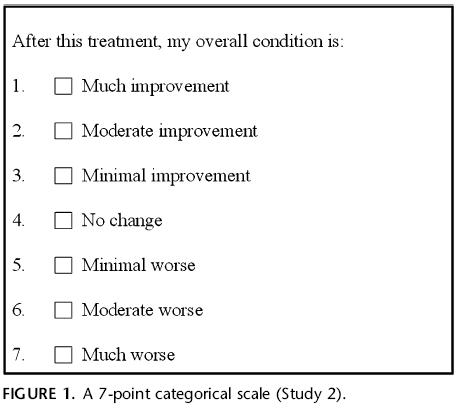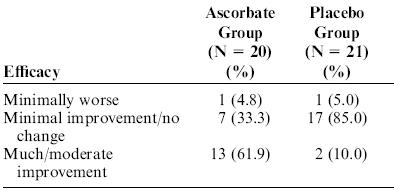It has been known for some time that taking vitamin C 500 mg twice daily following a wrist fracture can significantly reduce the chances of developing Complex Regional Pain / Reflex Sympathetic Dystrophy in that arm. Now it has been found that people with Post Shingles Pain are more likely to have low vitamin C levels and giving IV Vitamin C on three alternate days can reduce “spontaneous” pain in 62% cases by over 50%.
As mentioned previously, taking vitamin C 500 mg once or twice daily can help prevent CRPS in wrist fracture cases:
Zollinger PE, Tuinebreijer WE, Kreis RW, Breederveld RS. Effect of vitamin C on frequency of reflex sympathetic dystrophy in wrist fractures: a randomised trial. Lancet 1999; 354:2025-8.
abstract here
- a double-blind placebo-controlled trial.
- Subjects randomized to 500 mg of vitamin C or placebo daily for 50 days following cast immobilization
- CRPS / RSD in 22% control group vs only 7% in Vitamin C group
Acta Orthop Belg. 2002 Dec;68(5):481-4.
Vitamin C and prevention of reflex sympathetic dystrophy following surgical management of distal radius fractures
Cazeneuve JF, Leborgne JM, Kermad K, Hassan Y.
- wrist fractures pinned and casted
- 95 cases given Vitamin C 1 gm/day
- 100 control cases
- 10% RSD in Control group versus 2.2 % in Vitamin C group
Comment – WOW that simple measure reduced chronic persistent pain by 1/3 to 1/5th the incidence
—————-
Now in the Post herpetic Neuralgia group:
Plasma Vitamin C Is Lower in Postherpetic Neuralgia Patients and Administration of Vitamin C Reduces Spontaneous Pain but Not Brush-evoked Pain
Jen-Yin Chen, MD,* Chia-Yu Chang, MD,wz Ping-Hsun Feng, MD,* Chin-Chen Chu, MD,*
Edmund Cheng So, MD,* and Miao-Lin Hu, PhDy
Clin J Pain Sept. 2009;25(7):562–569 abstract here
- 41 patients randomly allocated into the IV ascorbate group and placebo.
- Interestingly, for results they used a catagorical scale:

- Procedure :
“Intravenous 500mL normal saline infusion with or without colorless ascorbate (50 mg/kg body weight, ma imum dose 2.5 g/d). All patients received 3 intravenous administrations, that is, on days 1, 3, and 5, with an infusion rate of 100 to 150 mL/hr”
- Results included:

This was a seven day trial – they do NOT comment on longterm though they say “Conclusions: Plasma vitamin C status plays a role in PHN, and intravenous ascorbate helps relieve spontaneous pain in PHN.”
P=0.001
- In a separate study arm, they found Vitamin C levels significantly lower than controls and that the IV infusions brought these levels back to normal
Mechanisms of action – rather involved descriptions – that I felt was better given verbatum:
Norepinephrine effects on descending spinal inhibition – “Spinal monoamines (norepinephrine and serotonin) are involved in the descending inhibition of nociceptive transmission.31 Noradrenergic fibers from brainstem terminate and release norepinephrine in the superficial dorsal horn to exert its antinociceptive actions. Ascorbic acid, a key cofactor of dopamine b-monooxygenase, is essential for norepinephrine biosynthesis. The conversion of dopamine to norepinephrine by dopamine b-monooxygenase is maximally efficient only in cells replete with external ascorbic acid.6 Thus, to enhance the spinal descending inhibitory pathway is one of the possible mechanisms of
vitamin C to reduce neuropathic pain.
b-endorphin stimulation – “b-endorphin has been reported to elevate the threshold of chronic
neuropathic pain in rats.32 Ascorbic acid, by enhancing the adenylyl cyclase-cyclic adenosine monophosphate system, can augment the production and release of b-endorphin
from neonatal rat hypothalamic neurons in culture in a time-related and dose-dependent manner,12 and hence, may modulate neuropathic pain.
Shut down bad electron carrying reactive oxygen species (ROS) – “ROS contribute to the development and maintenance of neuropathic pain that can be relieved by systemic
injection of an ROS scavenger in a dose-dependent manner in a rat model.29 Thus, an ROS scavenger is suggested to be neuroprotective by scavenging excess ROS.29 Indeed,
vitamin C is an extracellular and intracellular antioxidant33 but also the major antioxidant in CSF, and its effect is concentration dependent.34 Nowadays, exaggerated inflammation35
after tissue trauma and cumulative neuroinflammation of peripheral nerve system36 in rats have also been shown to induce spontaneous pain.
Now my point in use with RSD – “Not surprisingly, it has been advocated that it may be beneficial to supply and increase plasma concentrations of vitamin C for wrist fracture patients at risk for complex regional pain syndrome type I.10,11 Thus, patients with PHN may be highly susceptible to vitamin C deficiency, which may constitute a perpetuating factor for chronic neuropathic pain. Therefore, vitamin C may be a suitable adjuvant for inclusion in multidrug regimens to control spontaneous pain in patients with PHN. ”
Shingles is so much worse in the elderly because the spinal tracts of descending inhibition (pain blocking tracts in spinal cord) have atrophied away (saw a cross section slide of spinal tract in elderly – hardly any cells left in it). Victims with post shingles pain are often so sick they don’t eat properly and so it is no wonder their vitamin C levels are low. If taken 500 mg vitamin C twice daily could do what it did for post fracture pains, then it would be simply the best thing since sliced bread…
If Vitamin B12 is low, then that will make it worse too, and I see old time practice was to give B12 shots to shingles subjects…
Take home message – got shingles – take vitamin C 500 mg twice daily for 2-3 months. Vitamin C supplementation in post shingles cases could help though oral dose is unknown.
Better yet, before you get sick, consider a shingles vaccine- several hundred dollars and cannot get it in in less than quantities of 3-5. Also need a druggist with a freezer at minus 15 degrees – not available in this town…
Meanwhile…
Anyone know where you can get IV vitamin C in Canada without a local pharmacist making it up? Any other comments?

Pingback: Pain Medical Musing » Blog Archive » What Does One Do To Prevent Post Surgery Pains?
I administer intravenous vitamin C, mostly for chronic viral and oncology situations, and my patients have found it effective in most cases.
Pingback: Vitamin C Strikes Again – ?Prevents Post Surgical Wrist Complex Regional Pain and Obviously Post Foot/Ankle Surgery CRPS | Pain Medical Musing